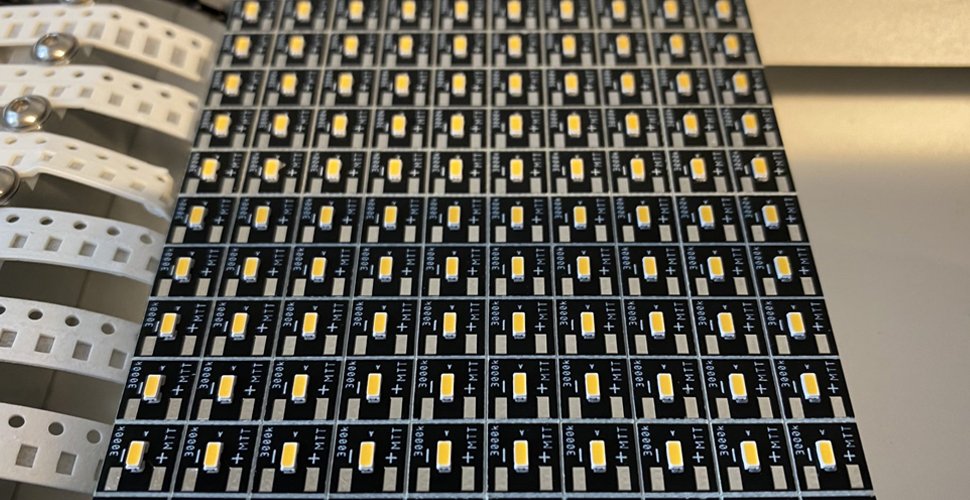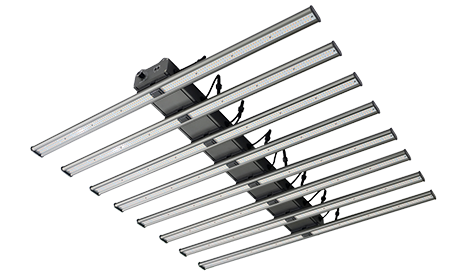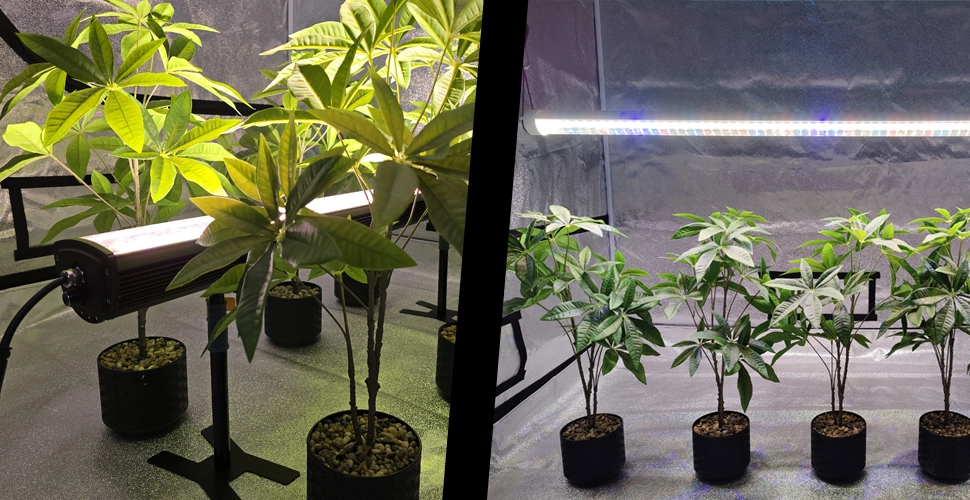Lysemitterende diode er en lysemitterende enhet kjent for sin strømsparing, holdbarhet og sikkerhet. De siste årene har rask utvikling gjort det til en viktig del av livene våre.
Visste du at det er flere typer LED -brikker?
I dag vil auxgrow gi deg en forståelse av forskjellige typer LED -brikker og deres distinksjoner, hjelpe deg med å utforske alternativene dine, vurdere dine krav og ta informerte beslutninger.
Ulike typer LED-brikker
LED, forkortelse for lysemitterende diode, er en type halvlederenhet som avgir lys når en elektrisk strøm går gjennom den.
Det gir flere fordeler i forhold til tradisjonelle glødende og energisparende pærer, som har gjort det stadig mer populært og mye brukt.
LED -er har utviklet seg til forskjellige typer for å imøtekomme forskjellige krav. Vanlige typer lysdioder inkluderer DIP -LED, SMD LED og COB -LED.
Det er imidlertid viktig å merke seg at mangfoldet av LED -typer strekker seg langt utover disse tre eksemplene.
Dip LED -mening
La oss starte med den første typen LED kalt Direct Inline Package Light-Emitting Diode, eller Dip LED for kort.
De fleste er kjent med og ser sannsynligvis for seg denne typen LED -brikker når de tenker på lysdioder.

Dip LED -klipp har eksistert i over 50 år siden oppfinnelsen i 1962. De har imidlertid ikke blitt faset ut og fortsetter å bli brukt i dag.
DIP -lysdioder er preget av deres lavspennings-, lavvarmeproduksjons- og høye sikkerhetsstandarder.
Hva er SMD LED -brikke?
Den andre typen er den overflatemonterte enhetens lysemitterende diode, ofte kjent som SMD-LED.
Klipp -LED SMD er preget av sin lille størrelse og lave kostnader. Sammenlignet med DIP -lysdioder har den en mindre formfaktor og relativt høyere lysende effektivitet.
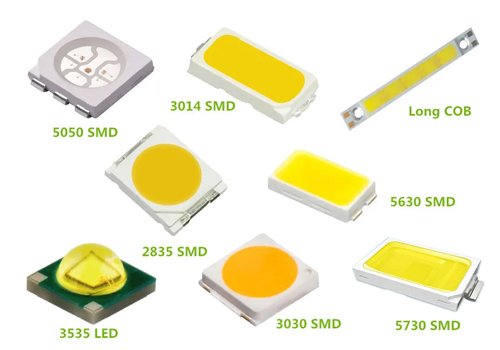
Hva er COB LED -brikke?
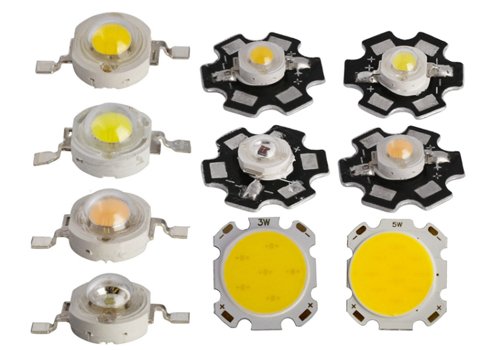
COB-LED står for chip-on-board lysemitterende diode, som bruker en emballasjeteknologi der LED-brikkene er direkte montert på et kretskort med høy termisk ledningsevne.
Som navnet tilsier, består et klipp LED COB av flere LED -brikker integrert i en enkelt pakke. De viktigste funksjonene inkluderer høy stabilitet, effektiv varmeavledning og enhetlig lysfordeling.
Hvordan identifiserer du LED -brikker?
Nå som du er kjent med de forskjellige typene LED -brikker, er det på tide å ta fatt på en spennende forståelsesreise.
Virker identifisering av LED -brikker som en skremmende oppgave for deg? Ikke bekymre deg! Vi er her for å gi deg praktisk kunnskap og praktiske teknikker for å hjelpe deg med å skille mellom LED -brikketyper trygt.
La oss dykke inn og belyse din vei til å mestre LED -chipidentifikasjon.
Form av brikke -ledet
Det er lett å skille fra hverandre disse tre typene LED -brikker bare ved å se på deres fysiske utseende.
Dip -lysdioder kommer i forskjellige former som runde, firkantede eller uregelmessige. Diameterstørrelsene varierer typisk fra 3mm, 5mm og 10mm.
Chip ombord LED kan ha en runde, firkantede eller stripeform, og deres dimensjoner kan tilpasses basert på spesifikke applikasjonskrav. Størrelsen har en tendens til å øke med høyere strømvurderinger.
SMD -lysdioder Primært har en firkantet overflatepakke, med forskjellige størrelser som 2835 LED-brikker, 3825 LED-brikker, 5050 LED-brikker, 5730 LED-brikker, og så videre.
Og hva er forskjellen mellom dem?
Faktisk kan vi dele disse modellnumrene i to deler. Den ene delen tilsvarer lengden, mens den andre delen representerer bredden på LED -brikken.

På markedet er det en annen type SMD -brikke kjent som LED -brikke med høy effekt. Disse lysdiodene er litt større i størrelse sammenlignet med vanlige SMD -lysdioder. Noen av dem har en halvsirkulær objektiv på toppen, og det er derfor de også blir referert til som LED-lysperler eller LED-moduler.
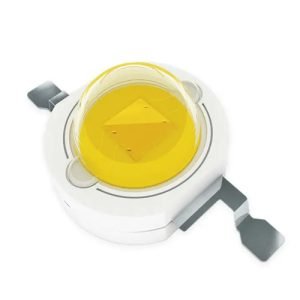
Sveisingssammenligning
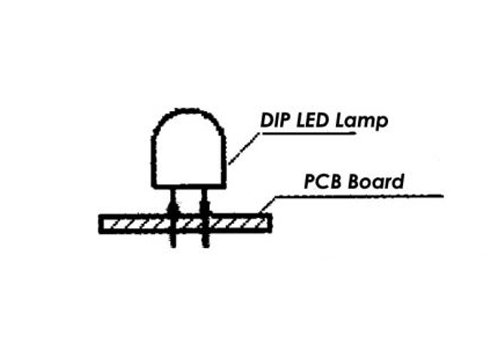
For lysdioder som dukkert chips, må du passere pinnene deres gjennom kretskortet og lodde dem fra bunnen. De kan også kobles direkte til en brødbord for bruk.
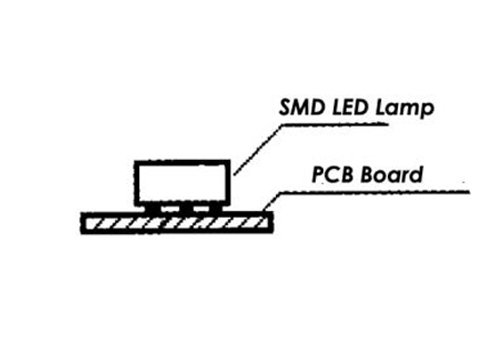
På den annen side kan SMD -LED -brikker direkte loddes på kretskortet uten å måtte bore et hull som dukkert lysdioder.
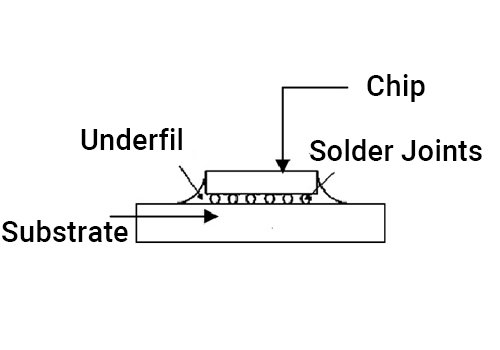
COB -LED -brikker er allerede festet til sitt eget kretskort, slik at du bare trenger å lodde strømledningene for dem, og de kan brukes direkte.
Polariteten til ChIP -ledet
Polariteten til COB
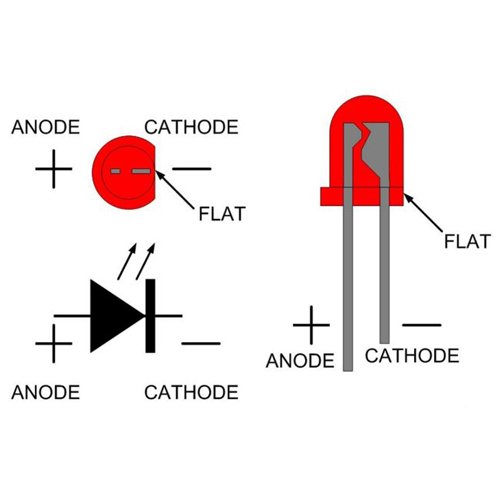
De lengre pinnene er positive og de kortere pinnene er negative. Å se på LED fra toppen viser også at den ene siden er flat og tappen under den er negativ.
Polariteten til dukkert
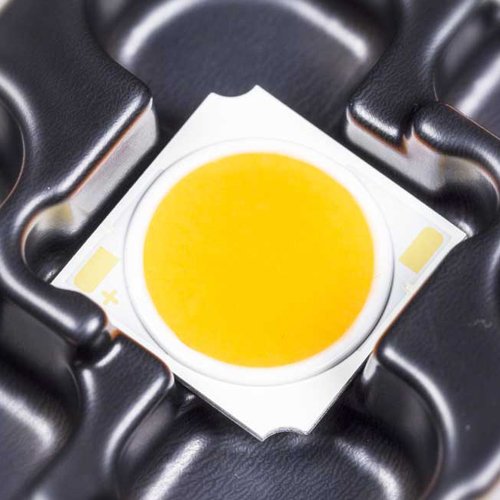
Når det gjelder COB -lysdioder, er polaritet typisk indikert direkte på kretskortet, noe som gjør det enkelt å skille.
Polariteten til SMD
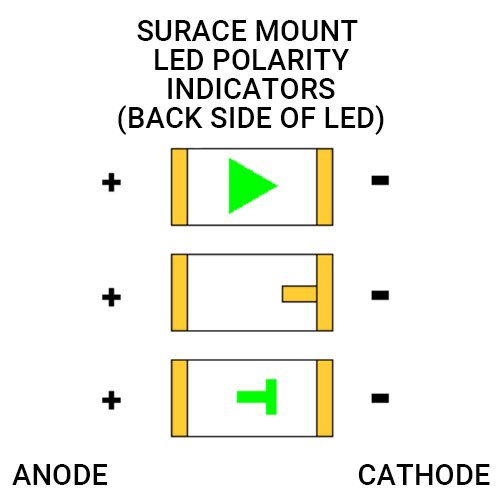
For å bestemme polariteten til en SMD -LED, kan vi observere dens markeringer her. Pinnen med denne merkingen er den negative (katode) terminalen.
Det er også forskjellige måter å identifisere LED -polariteten. Hvis du har et multimeter, vil det være enkelt for deg å identifisere det.
Sett multimeteret til kontinuitets- eller diodemodus og berør sonder til LED -ene. Når LED lyser opp, er terminalen som den positive sonden er koblet til den positive (anode) terminalen.
Det er viktig å forstå de spesifikke funksjonene til et multimeter. Noen multimeter er imidlertid motsatt, som pekermultimeter. Basert på den interne utformingen, vil polariteten til katodesonden være positiv når den er i pipestyret.
Påføring av chip -LED
Dip LED -brikker
Siden DIP-LED har begrensede belysningsfordeler, brukes de ofte som indikatorlys, i skjermer eller for lysverktøy med lav effekt.
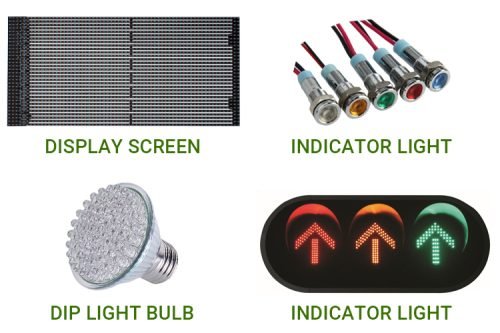
Cob LED -brikker
COB -lysdioder brukes først og fremst i lysenheter som mobiltelefoner, kameraer eller søkelys. I tillegg er de foretrukket for applikasjoner som krever høy lysstyrke, for eksempel gatelys eller industrielle lysarmaturer.
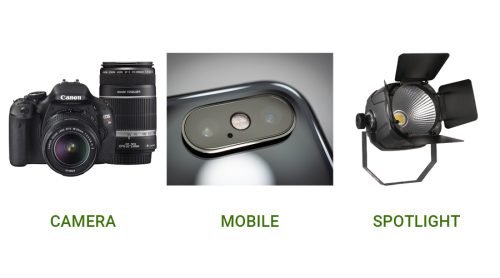
SMD LED -brikker
SMD -lysdioder har et relativt bredt spekter av applikasjoner. Deres lille størrelse gjør dem praktisk for installasjon i forskjellige enheter, inkludert LED -pærer, dekorative lysstrimler, LED-vekstlys, RGB -fargelys og forskjellige andre LED -inventar.
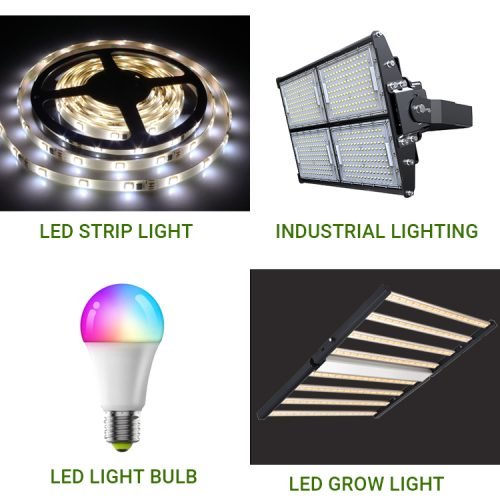
Faktisk ytelse av chip -ledet
For å vurdere den faktiske ytelsen til disse LED -brikketypene, har vi gitt spesifikasjoner for DIP-, SMD- og COB -lysdioder, alle avgir kjølig hvitt lys.
- Dip LED: Driftsspenning på 3,6-4 volt, trekker 30 mA og har en utslippsvinkel på 22 grader.
- SMD LED: Driftsspenning på 3-3,2 volt, strøm på 65 ma, og en utslippsvinkel på 120 grader.
- Høy effektivitet SMD LED: Driftsspenning på 3-3,2 volt, strømforbruk på 1 watt og en utslippsvinkel på 130 grader.
- COB LED: Driftsspenning på 9,6-11 volt, kraft på 10 watt og en utslippsvinkel på 120 grader.
La oss deretter måle deres faktiske lysstyrke. Med hver LED -type drevet med sin spesifiserte spenning, og plasserte 50 centimeter fra LED, oppnådde vi følgende belysningsavlesninger:
- Dip LED: Illuminance of 96 Lux
- SMD LED: Illuminance of 29 Lux
- High Power SMD LED: Illuminance of 121 Lux
- COB LED: Maksimal belysning på 1 423 lux
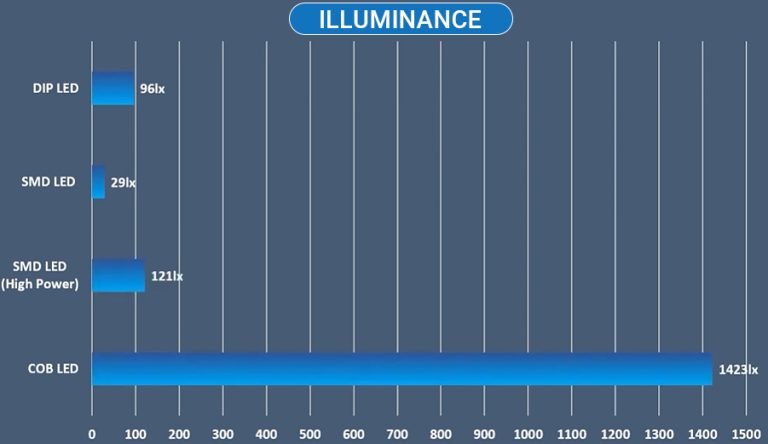
Hvis du ønsker å konvertere belysningsavlesningene til lysende fluks, kan du bruke følgende formel:
Luminous flux (i lumen) = Illuminance (i lux) × område (i kvadratmeter)
For å konvertere belysning til lysintensitet, trenger du LEDs lysende intensitet og utslippsvinkel. Siden målingene som er gitt er i lux (Illuminance), kan vi konvertere dem til lysintensitet ved å multiplisere belysningen med den målte avstanden.
Ved å ta en dukkert LED som et eksempel, ved å multiplisere belysningsverdien på 96 Lux med kvadratet med den målte avstanden (0,5 meter), får vi 24 CD. Forutsatt at en bjelkevinkel (theta) på 22 grader, er den estimerte lysstrømmen omtrent 2,77 lumen.
For SMD LED, med en belysning på 29 lux og en strålevinkel på 120 grader, er den estimerte lysstrømmen omtrent 22,78 lumen.
Når det gjelder høyeffektiv SMD LED, med en belysning på 121 Lux og en strålevinkel på 130 grader, er den estimerte lysstrømmen omtrent 109,75 lumen.
For COB -LED, med en belysning på 1 423 lux og en strålevinkel på 120 grader, er den estimerte lysstrømmen omtrent 1 117,62 lumen.
Hva er den lyseste LED -brikken?
Når vi har oppnådd tilstrekkelig lysstyrke, kan vi sammenligne lysemitterende effektiviteten til forskjellige LED-modeller.
Med andre ord, vi ønsker å bestemme hvilken LED som kan gi høyere produksjon under samme strømforbruk. Ved å bruke følgende formel kan vi beregne dataene:
- Dip LED: Omtrent 42,78 LM/W
- SMD LED: Omtrent 102,67 lm/w
- High-Power SMD LED: Cirka 109,42 LM/W
- COB -ledet: cirka 111,62 lm/w
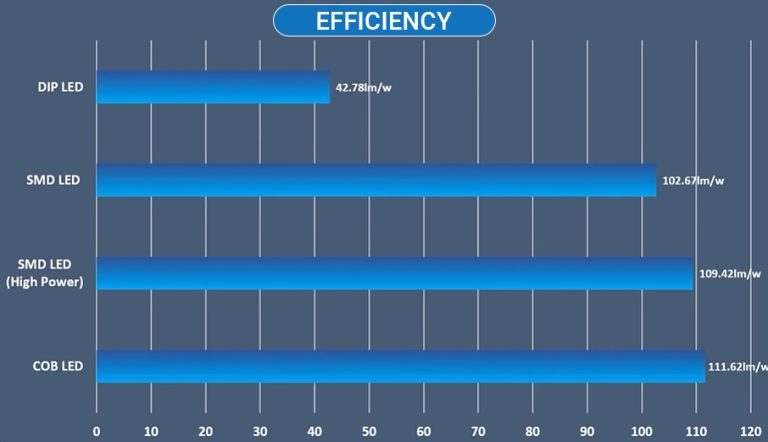
Fra denne analysen er det tydelig at COB-lysdioder har høyere effektivitet sammenlignet med SMD, vanlig SMD og DIP LED-brikker. I praktiske situasjoner er det imidlertid andre faktorer å vurdere.
LED -er kan ikke konvertere all elektrisk energi til lysenergi. Den gjenværende elektriske energien blir konvertert til varmeenergi, noe som kan påvirke ytelsen til LED når temperaturen stiger.
Nå må vi måle variasjonene i lys og temperaturen i LED under normal drift.
For denne testen vil jeg feste et termoelement til LED uten å påvirke belysningen, og observere temperaturendringene til LED over en kort periode på 10 minutter.
Dip LED -klipp

I løpet av de første 3 minuttene øker temperaturen på DIP -LED fra 20,1 grader Celsius til 28,2 grader Celsius.
Imidlertid, i løpet av de påfølgende 7 minuttene, forblir LEDs temperatur relativt stabil, og varierer mellom 27 og 28 grader Celsius. Gjennom denne prosessen holder lyset av DIP -LED konsekvent på 96 Lux.
SMD LED -klipp
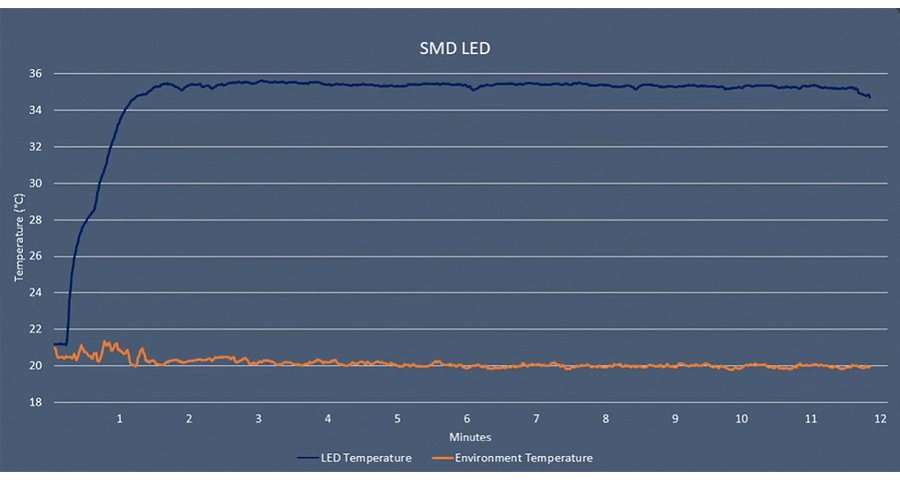
Temperaturen på SMD -LED stiger fra 21,1 grader Celsius til 35,4 grader Celsius, som tar totalt to minutter.
Deretter forblir temperaturen jevn mellom 35,2 og 35,6 grader Celsius. Belysningen påvirkes imidlertid ikke av temperaturen og forblir konstant ved 29 Lux.
High Power SMD LED -klipp
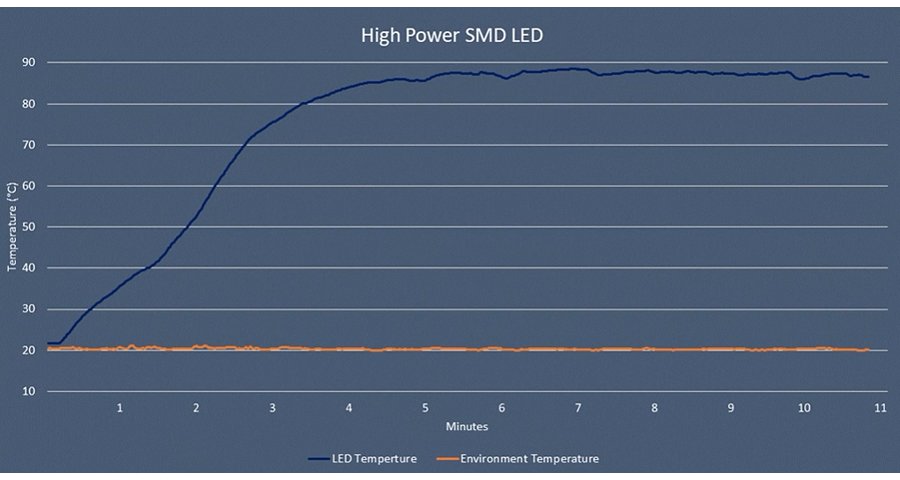
Etter å ha slått på, øker temperaturen på den høye strømmen SMD-LED kontinuerlig til den begynner å sakte avta etter 4 minutter. Den maksimale temperaturen som den høye strømmen SMD LED kan nå er 88,94 grader Celsius.
Under prosessen med temperaturøkning synker belysningen fra den første 121 Lux til 93 Lux etter 10 minutter.
Cob LED -klipp
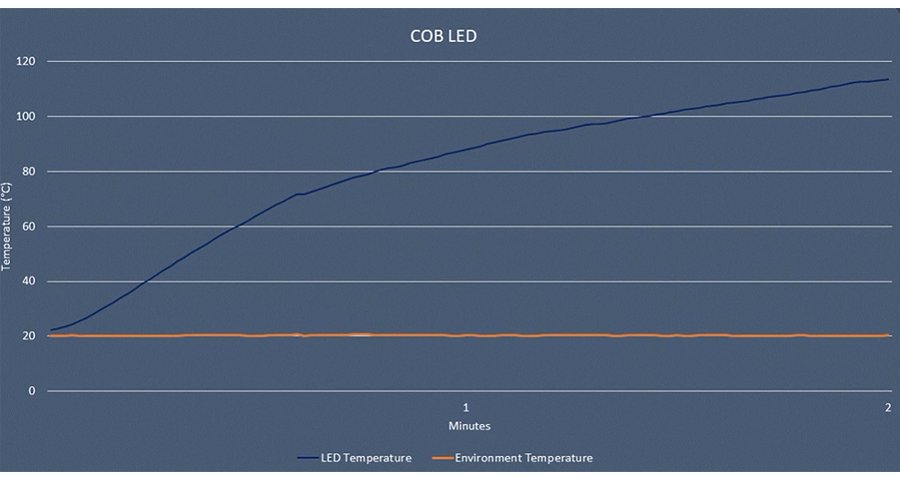
Ved testing av COB -lysdioder er det viktig å bruke en kjøleribbe som en forutsetning. For å forhindre skade, er det besluttet å forkorte testtiden til 2 minutter uten kjøleribbe.
Når du slår på, stiger temperaturen på COB med en hastighet på 1 til 2 grader Celsius per sekund. Etter bare ett minutt når den målte temperaturen 87,9 grader Celsius. I løpet av andre minutt har temperaturen allerede nådd 113,5 grader Celsius.
Imidlertid synker belysningen også fra 1 423 Lux til 917 Lux under disse forholdene, noe som påvirker effektiviteten deres betydelig.
Denne observasjonen demonstrerer oppvarmingsproblemet som høykraft-lysdioder står overfor når de opereres uten riktig varmeavleder tiltak, for eksempel en kjøleribbe.
Varme tips
Hvis riktig varmedissipasjon ikke oppnås, kan ytelsen til LED påvirkes av temperaturen den avgir.
Hos Auxgrow er LED -vekstlysene våre designet med utmerkede varmeavledningsevner. Målet vårt er å sikre at LED -anleggslysene fungerer jevnt mens de gir brukerne en garanti for sikkerhet.
LED -er bruker ofte aluminiumskretsbrett, også kjent som aluminiums -PCB, som har overlegen termisk ledningsevne. Denne funksjonen hjelper sterkt i varmeavledningen av lysdioder.
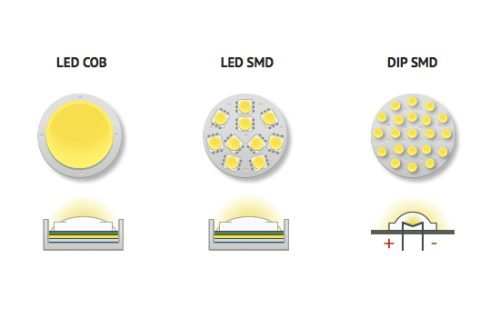
Hva er den beste LED -lysbrikken?
Uansett hvilken type LED -klipp, har hver sine fordeler og ulemper. Det er vanskelig å hevde at en brikke definitivt er overlegen andre.
Den beste LED -brikken er den som passer dine spesifikke behov og krav. Utforsk alternativene dine, vurder dine krav og ta en informert beslutning.
Å velge riktig LED -brikke er avgjørende for dine spesifikke innendørs anleggsbelysningsbehov. Auxgrow gir de beste LED -belysningsløsningene for plantene dine.
AuxGrow spesialiserer seg på å tilby et bredt spekter av LED-plantelys av høy kvalitet og lette brikker for å oppfylle de unike kravene til innendørs hagearbeid.
Ikke gå glipp av muligheten til å gi optimal belysning for dine grønne venner. Kontakt Auxgrow i dag For å lære hvordan LED vokser lysene, kan du forvandle din innendørs hageopplevelse.
Jayes
Som Digital Marketing Manager hos AUXGROW kombinerer Jayes en lidenskap for hydroponiske systemer og ekspertise innen LED-vekstlys. Med praktisk erfaring og en dyp forståelse, guider Jayes deg gjennom en verden av bærekraftig dyrking.

